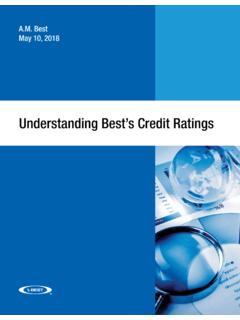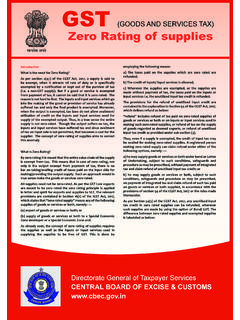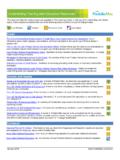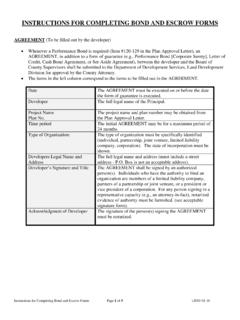Transcription of Basel Committee on Banking Supervision Basel III Document
1 Basel Committee on Banking Supervision Basel III Document Revisions to the securitisation framework Amended to include the alternative capital treatment for simple, transparent and comparable securitisations 11 December 2014 (rev. July 2016) Note: Basel III revisions published in December 2017 affect parts of this publication. This publication is available on the BIS website ( ). Bank for International Settlements 2016. All rights reserved. Brief excerpts may be reproduced or translated provided the source is stated. ISBN 978-92-9197-016-2 (print) ISBN 978-92-9197-015-5 (online) Note: Basel III revisions published in December 2017 affect parts of this publication.
2 Introduction .. 1 Background on the STC criteria .. 5 Rationale for introducing STC criteria into the capital framework .. 6 Definition of STC securitisation for regulatory capital purposes .. 6 Determination of STC compliance and role of supervisors .. 7 Standards text .. 8 I. Credit risk securitisation framework .. 8 A. Scope and definitions of transactions covered under the securitisation framework 8 B. Definitions and general terminology .. 9 C. Operational requirements for the recognition of risk 13 1. Operational requirements for traditional securitisations .. 13 2. Operational requirements for synthetic securitisations .. 13 3. Operational requirements for securitisations containing early amortisation provisions.
3 14 4. Operational requirements and treatment of clean-up calls .. 15 D. Due diligence requirements .. 15 E. Treatment of securitisation exposures .. 16 1. Calculation of capital requirements and risk-weighted assets .. 16 2. Hierarchy of approaches .. 17 (i) Securitisation exposures of IRB pools .. 17 (ii) Securitisation exposures of SA pools .. 17 (iii) Securitisation exposures of mixed pools .. 17 3. Approaches .. 18 (i) Internal Ratings-Based Approach (SEC-IRBA) .. 18 (ii) External Ratings-Based Approach (SEC-ERBA) .. 22 (iii) Internal Assessment Approach (IAA) .. 25 (iv) Standardised Approach (SEC-SA) .. 28 4. Caps for securitisation exposures .. 29 F. Treatment of resecuritisation exposures.
4 31 G. Implicit support .. 31 H. Treatment of credit risk mitigation for securitisation exposures .. 31 I. Capital treatment for simple, transparent and comparable (STC) securitisations .. 33 1. Scope and identification of STC securitisations for the purposes of alternative capital treatment .. 33 Note: Basel III revisions published in December 2017 affect parts of this publication. Compliance with the STC criteria and the additional criteria for capital purpose and oversight .. 34 3. Alternative capital treatment for STC securitisations meeting the additional criteria for capital purposes .. 34 (i) Internal Ratings-Based Approach (SEC-IRBA) .. 34 (ii) External Ratings-Based Approach (SEC-ERBA).
5 35 (iii) Standardised Approach (SEC-SA) .. 36 II. Other non-securitisation sections .. 37 (A) Components of capital (as revised by Basel III) .. 37 (B) Credit risk the Standardised Approach .. 37 (C) Credit risk the Internal Ratings-Based approach .. 38 (D) The second pillar supervisory review process for securitisation .. 39 Annex 1: Illustrative examples for recognition of dilution risk when applying the SEC-IRBA to securitisation exposures .. 41 Annex 2: Expanded set of STC criteria for regulatory capital purposes .. 46 Note: Basel III revisions published in December 2017 affect parts of this publication. This securitisation framework, which will come into effect in January 2018, forms part of the Committee s broader Basel III agenda to reform regulatory standards for banks in response to the global financial crisis and thus contributes to a more resilient Banking sector.
6 This framework includes the revised securitisation framework published in December 2014 along with the alternative capital treatment for simple, transparent and comparable (STC) securitisations. The revised securitisation framework published in December 20141 aimed to address a number of shortcomings in the Basel II securitisation framework and to strengthen the capital standards for securitisation exposures held in the Banking Furthermore, the Basel Committee and the International Organization of Securities Commissions (IOSCO) jointly conducted work to review securitisation markets and to identify factors that may be hindering the development of sustainable securitisation markets.
7 The Committee and IOSCO issued in July 2015 criteria that could help and to assist the financial industry's development of simple, transparent and comparable Thereafter, the Committee considered how to incorporate such criteria into the securitisation capital framework. In developing the final standards for capitalising securitisation exposures (including those considered as STC-compliant), the Committee has carefully taken into account the comments received on the three consultative documents,4 as well as the results of the quantitative impact studies (QIS) undertaken during the consultations. Furthermore, revisions have also been guided by the Committee s determination to strike an appropriate balance between risk sensitivity, simplicity and comparability.
8 The STC criteria developed by the Committee and IOSCO in July 2015 STC explicitly excluded short-term securitisations (and more specifically, ABCP conduits / programmes) from the scope of the T he Committee and IOSCO are currently considering whether, and how, STC criteria for this type of schemes should also be developed. If the Committee and IOSCO finally publish STC criteria for ABCP conduits / programmes, the Committee will in turn determine how to incorporate them in the revised securitisation framework, and how the various types of exposures to these schemes will be treated. Shortcomings in the Basel II securitisation framework The crisis highlighted several weaknesses in the Basel II securitisation framework, including concerns that it could generate insufficient capital for certain exposures.
9 This led the Committee to decide that the securitisation framework needed to be reviewed. The Committee identified a number of shortcomings relating to the calibration of risk weights and a lack of incentives for good risk management, namely: 1 Available at 2 Securitisation exposures held in the trading book will be subject to the revised framework for the trading book, available at 3 Available at 4 Available at (first consultation on revisions to the securitisation framework); (second consultation); and (consultation on capital treatment for STC securitisations). 5 While the July 2015 STC criteria excluded short-term securitisations instruments from the scope of the STC criteria, the Committee understands that this exemption was primarily aimed at ABCP.
10 Short-term securitisation instruments other than ABCP should not be prevented from qualifying for STC status simply because their maturity is shorter than one year, provided that they qualify under the existing STC criteria. By contrast, the Committee acknowledges that, due to their specific structure, ABCP programmes would not meet all STC criteria. Consequently, the Committee proposes to keep short-term securitisation instruments other than ABCP within the scope of the STC framework. Note: Basel III revisions published in December 2017 affect parts of this publication. (i) Mechanistic reliance on external ratings; (ii) Excessively low risk weights for highly-rated securitisation exposures; (iii) Excessively high risk weights for low-rated senior securitisation exposures; (iv) Cliff effects; and (v) Insufficient risk sensitivity of the framework.
















